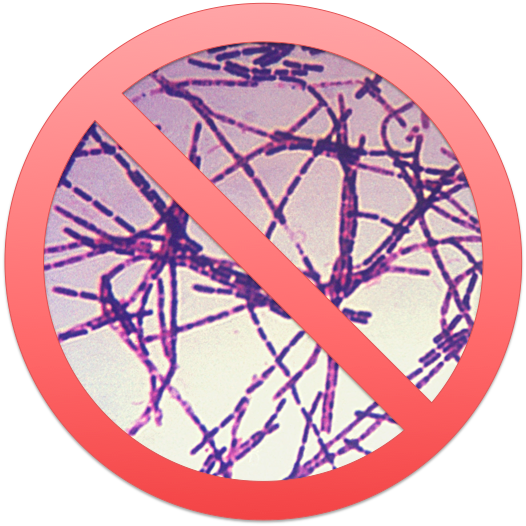Team:Washington/Safety
From 2010.igem.org
Safety
The strains of E. coli that we have generated in the course of this project are not likely to cause disease or other bio-safety problems under standard laboratory conditions. None of the parts that we have generated in our project have a high inherent bio-safety risk, though it is conceivable that these parts could be used to express proteins that themselves have bio-safety issues. Therefore we stress that users of this technology verify that human risks from expressed proteins are minimal.
We have a safety committee at our institution called [http://www.ehs.washington.edu/ Environmental Health and Safety (EHS)]. Here is a link to the [http://www.ehs.washington.edu/forms/rbs/rpha.doc Biohazard Risk Assessment Form] that EHS requests you fill out. EHS at our institution is primarily interested in work with biological agents which can be considered pathogenic, or work with dangerous chemicals.
Our lab work was all done in strains of E. coli. EHS does not consider work with this particular organism to present any immediate safety risks. We did however use the following chemicals which EHS does consider to be of dangerous origin:
- ethidium bromide
- acrylamide
The lab we worked in had the appropriate MSDS sheets for these chemicals. We made sure of this before we worked with these chemicals. Everyone knew how to properly handle such chemicals and received the necessary safety training courses to use them.
Anthrax Work
No live or attenuated anthrax was used in any way.
We did not handle, culture, transport, or otherwise come into contact with Bacillus anthracis or derivatives created or purified from Bacillus anthracis, nor do we plan to. Our Gram-positive treatment utilizes the protein CapD, which is natively produced by Anthrax to anchor a poly-γ-D-glutamate layer to its extracellular matrix. CapD is a gene that Bacillus anthracis uses to create its home, and unrelated to factors that Bacillus anthracis uses to kill hosts. We created our CapD plasmid through oligonucleotide synthesis, thus avoiding Bacillus anthracis. CapD is non-toxic and its catalytic properties, transpeptidation and hydrolysis of poly-γ-D-glutamate, are not dangerous to humans. CapD could not be mutated to create a protein that would be dangerous to humans. The amino acid sequence and structure of CapD is already in the public domain and its addition to the registry presents no danger to the public.
Secretion System
Our work on Gram-negative Therapeutics was done only on non-pathogenic strains. We used the Type VI Secretion System from Pseudomonas aeruginosa PAO1. All modifications and testing of plasmids and fosmids were in non-pathogenic E. Coli strains, namely EPI300, SW102, and BL21. All cloning and testing of Tse2 was done in the non-pathogenic E. coli strains DH5a, MG1655, and BL21. The toxin we work with, Tse2, targets only prokaryotic cells, thus posing no direct danger to humans. At no time was a working type six secretion system placed into E. coli producing Tse2. Therefore, none of the strains could cause any possible ecological danger.
← Foldit Anthrax Work →
 "
"

